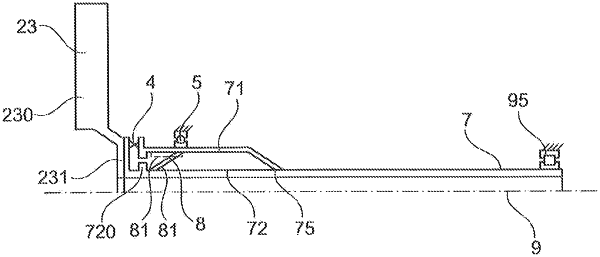| CPC F02C 7/36 (2013.01) [F01D 15/12 (2013.01); F01D 21/045 (2013.01); F02C 7/06 (2013.01); F02K 3/06 (2013.01); F05D 2220/323 (2013.01); F05D 2220/327 (2013.01); F05D 2220/36 (2013.01); F05D 2260/40311 (2013.01)] | 15 Claims |

|
1. A structural assembly for a gas turbine engine,
comprising:
a fan, which comprises a fan disk and a multiplicity of fan blades,
a forked fan shaft, which is coupled to the fan and comprises a radially outer fan shaft and a radially inner fan shaft arranged within the radially outer fan shaft, wherein:
the radially outer fan shaft is configured to transmit a torque to the fan in a normal operation of the fan, wherein the radially outer fan shaft is connected to the fan by a predetermined breaking point,
the radially outer fan shaft is mounted in a bearing,
the radially inner fan shaft is fixedly connected to the fan,
the radially inner fan shaft and the radially outer fan shaft merge into one another downstream of the bearing and are fixedly connected to one another at a connection point, and
the predetermined breaking point is configured to break when a fan blade is lost,
a contact mechanism, which is activated by a decrease in a rotational speed of the radially inner and radially outer fan shafts and which couples the radially inner fan shaft to the radially outer fan shaft when the rotational speed of the radially inner and radially outer fan shafts falls below a predefined rotational speed after the predetermined breaking point breaks, wherein, after the radially inner and radially outer fan shafts have been coupled by the contact mechanism, radially acting forces are transmitted from the radially inner fan shaft to the radially outer fan shaft.
|